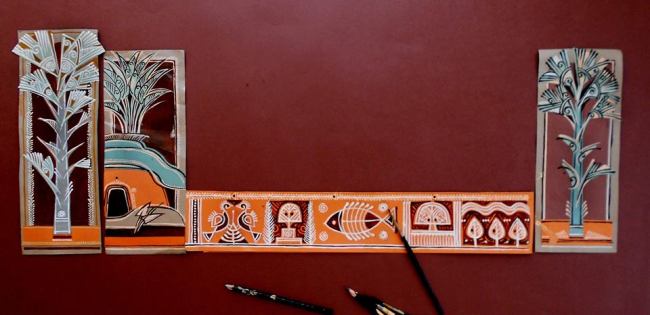Stage craft at Santiniketan is still an experience for the senses. These are photos from a recent production of Chandalika, the dance drama by Rabindranath Tagore. Based on a Buddhist tale ‘Chandalika’ was published in the form of a dance drama in 1938 and was for the first time staged in Calcutta in the same year.
The story of ‘Chandalika’ centers round Prokiti (Chandalika or daughter of the Chandals), a low caste girl, who is despised by her neighbors. Even hawkers in the street do not sell their goods to her. She broods over her destiny and curses her mother for bringing her into the world. While in this mood, she goes to fetch water from the well where she meets Ananda, a disciple of Buddha. Ananda begs her for a drink of water. Prokriti informs him that she is an untouchable and as such it is decreed that water from her well is to be treated as polluted. Ananda replies to the effect that all human beings are equal, drinks water, blesses her and departs.The incident changes Prokriti’s entire outlook on life and she begins to live for the day when Ananda would appear before her again. He does on one occassion go past her chanting hymns with other Buddhist monks but fails to notice her.
Bitterly disappointed, she seeks help from her mother who is known to practice witchcraft. The mother agrees and by various means of sorcery succeeds in bringing Ananda before Prokriti. The later touches the monk’s feet and begs his forgiveness for dragging him down to her own level. The play ends with Ananda pronouncing his blessings on her.
They were planned and executed under the guidance of Sudhi Ranjan Mukherjee, a past alumnus of Rabindra Bharati University and a current lecturer in Santiniketan,
A rough sketch of the trees to drawn on the panels forming the wings.
A mock up of the entire stage.
Wings with indigenous designs.
Stylized birds.
Birds.
Dancer, left wings.
Wings on right of stage.
All photographs: by Sudhi Ranjan Mukherjee.
Follow the link to hear the songs from the Chandalika:
Part 1:http://youtu.be/b0ztShZoCJY
Part 2:http://youtu.be/EhQwbS-6bTk
Part 3:http://youtu.be/UIm2yQATkiw
Part 4:http://youtu.be/CtrQPmGRZ90











You must be logged in to post a comment.